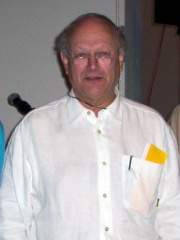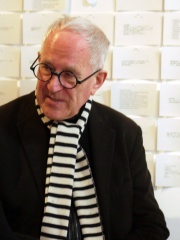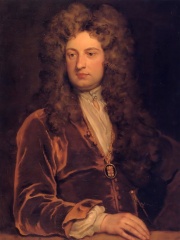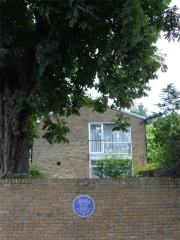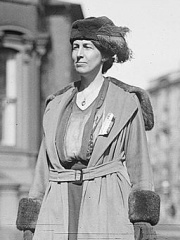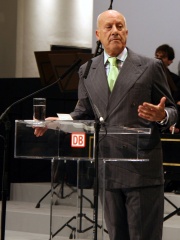
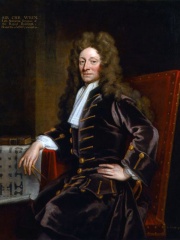
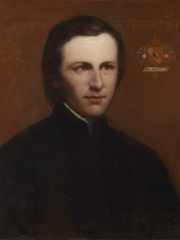
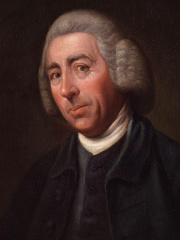
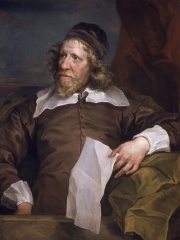
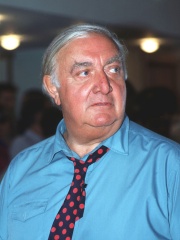
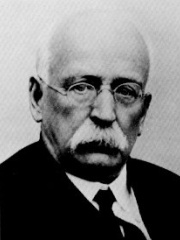
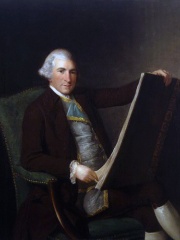
The Most Famous
ARCHITECTS from United Kingdom
This page contains a list of the greatest British Architects. The pantheon dataset contains 518 Architects, 50 of which were born in United Kingdom. This makes United Kingdom the birth place of the 3rd most number of Architects behind Italy, and Germany.
Top 10
The following people are considered by Pantheon to be the top 10 most legendary British Architects of all time. This list of famous British Architects is sorted by HPI (Historical Popularity Index), a metric that aggregates information on a biography's online popularity. Visit the rankings page to view the entire list of British Architects.

1. Norman Foster, Baron Foster of Thames Bank (b. 1935)
With an HPI of 78.70, Norman Foster, Baron Foster of Thames Bank is the most famous British Architect. His biography has been translated into 64 different languages on wikipedia.
Norman Robert Foster, Baron Foster of Thames Bank (born 1 June 1935), is an English architect. Closely associated with the development of high-tech architecture, Lord Foster is recognised as a key figure in British modernist architecture. His firm, Foster + Partners, first founded in 1967 as Foster Associates, is the largest in the United Kingdom, and operates internationally. He also serves as president of the Norman Foster Foundation, established to promote interdisciplinary thinking and research to help new generations of architects, designers and urbanists anticipate the future. The foundation, which opened in June 2017, is based in Madrid and operates globally. Foster received the Pritzker Prize in 2000.

2. Christopher Wren (1632 - 1723)
With an HPI of 71.26, Christopher Wren is the 2nd most famous British Architect. His biography has been translated into 77 different languages.
Sir Christopher Wren FRS (; 30 October 1632 [O.S. 20 October] – 8 March 1723 [O.S. 25 February]) was an English architect, astronomer, mathematician and physicist who is one of the most highly acclaimed architects in the history of England. Known for his work in the English Baroque style, he was accorded responsibility for rebuilding 52 churches in the City of London after the Great Fire in 1666, including what is regarded as his masterpiece, St Paul's Cathedral, on Ludgate Hill, completed in 1710. The principal creative responsibility for a number of the churches is now more commonly attributed to others in his office, especially Nicholas Hawksmoor. Other notable buildings by Wren include the Royal Hospital Chelsea, the Old Royal Naval College, Greenwich, and the south front of Hampton Court Palace. Educated in Latin and Aristotelian physics at the University of Oxford, Wren was a founder of the Royal Society and served as its president from 1680 to 1682. His scientific work was highly regarded by Isaac Newton and Blaise Pascal.

3. Augustus Pugin (1812 - 1852)
With an HPI of 70.32, Augustus Pugin is the 3rd most famous British Architect. His biography has been translated into 29 different languages.
Augustus Welby Northmore Pugin ( PEW-jin; 1 March 1812 – 14 September 1852) was an English architect, designer, artist and critic with French and Swiss origins. He is principally remembered for his pioneering role in the Gothic Revival style of architecture. Among his best-known work is the interior and clock tower of the Palace of Westminster, the meeting place of the Parliament of the United Kingdom. Pugin designed many churches in England, and some in Ireland and Australia. He was the son of Auguste Pugin, and the father of Edward Welby Pugin, Cuthbert Welby Pugin, and Peter Paul Pugin, who continued his architectural and interior design firm as Pugin & Pugin.

4. Capability Brown (1716 - 1783)
With an HPI of 70.18, Capability Brown is the 4th most famous British Architect. His biography has been translated into 30 different languages.
Lancelot "Capability" Brown (born c. 1715–16, baptised 30 August 1716 – 6 February 1783) was an English gardener and landscape architect, a notable figure in the history of the English landscape garden style. Unlike other architects including William Kent, he was a hands-on gardener and provided his clients with a full turnkey service, designing the gardens and park, and then managing their landscaping and planting. He is most famous for the landscaped parks of English country houses, many of which have survived reasonably intact. However, he also included in his plans "pleasure gardens" with flower gardens and the new shrubberies, usually placed where they would not obstruct the views across the park of and from the main facades of the house. Few of his plantings of "pleasure gardens" have survived later changes. He also submitted plans for much smaller urban projects, for example the college gardens along The Backs at Cambridge. Criticism of his style, both in his own day and subsequently, mostly centres on the claim that "he created 'identikit' landscapes with the main house in a sea of turf, some water, albeit often an impressive feature, and trees in clumps and shelterbelts", giving "a uniformity equating to authoritarianism" and showing a lack of imagination and even taste on the part of his patrons. He designed more than 170 parks, many of which survive to this day. He was nicknamed "Capability" because he would tell his clients that their property had "capability" for improvement. His influence was so great that the contributions to the English garden made by his predecessors Charles Bridgeman and William Kent are often overlooked; even Kent's champion Horace Walpole allowed that Kent "was succeeded by a very able master".
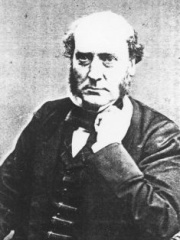
5. George Gilbert Scott (1811 - 1878)
With an HPI of 66.66, George Gilbert Scott is the 5th most famous British Architect. His biography has been translated into 23 different languages.
Sir George Gilbert Scott (13 July 1811 – 27 March 1878), largely known as Sir Gilbert Scott, was a prolific English Gothic Revival architect, chiefly associated with the design, building and renovation of churches and cathedrals, although he started his career as a leading designer of workhouses. Over 800 buildings were designed or altered by him. Scott was the architect of many notable buildings, including the Midland Grand Hotel at St Pancras Station, the Albert Memorial, and the Foreign and Commonwealth Office, all in London, St Mary's Cathedral, Glasgow, the main building of the University of Glasgow, St Mary's Cathedral in Edinburgh and King's College Chapel, London.

6. Inigo Jones (1573 - 1652)
With an HPI of 65.98, Inigo Jones is the 6th most famous British Architect. His biography has been translated into 54 different languages.
Inigo Jones (15 July 1573 – 21 June 1652) was an English architect who was the first significant architect in England in the early modern era and the first to employ Vitruvian rules of proportion and symmetry in his buildings. As the most notable architect in England, Jones was the first person to introduce the classical architecture of Rome and the Italian Renaissance to England. He left his mark on London by his design of single buildings, such as the Queen's House which is the first building in England designed in a pure classical style, and the Banqueting House, Whitehall, as well as the layout for Covent Garden square which became a model for future developments in the West End. He made major contributions to stage design by his work as a theatrical designer for several dozen masques, most by royal command and many in collaboration with Ben Jonson.

7. James Stirling (1926 - 1992)
With an HPI of 65.85, James Stirling is the 7th most famous British Architect. His biography has been translated into 38 different languages.
Sir James Frazer Stirling (22 April 1926 – 25 June 1992) was a British architect. Stirling worked in partnership with James Gowan from 1956 to 1963, then with Michael Wilford from 1971 until 1992.

8. Ebenezer Howard (1850 - 1928)
With an HPI of 64.36, Ebenezer Howard is the 8th most famous British Architect. His biography has been translated into 27 different languages.
Sir Ebenezer Howard (29 January 1850 – 1 May 1928) was an English urban planner and founder of the garden city movement, known for his publication To-Morrow: A Peaceful Path to Real Reform (1898), the description of a utopian city in which people live harmoniously together with nature. The publication resulted in the founding of the garden city movement, and the building of the first garden city, Letchworth Garden City, commenced in 1903. The second true Garden City was Welwyn Garden City (1920) and the movement influenced the development of several model suburbs in other countries, such as Forest Hills Gardens designed by F. L. Olmsted Jr. in 1909, Radburn, New Jersey (1923), Pinelands, Cape Town, and the four Suburban Resettlement Program towns of the 1930s, Greenbelt, Maryland, Greenhills, Ohio, Greenbrook, New Jersey, and Greendale, Wisconsin. Howard aimed to reduce the alienation of humans and society from nature, and hence advocated garden cities and Georgism. Howard is believed by many to be one of the great guides to the town planning movement, with many of his garden city principles being used in modern town planning.

9. Robert Adam (1728 - 1792)
With an HPI of 64.28, Robert Adam is the 9th most famous British Architect. His biography has been translated into 45 different languages.
Robert Adam (3 July 1728 – 3 March 1792) was a British neoclassical architect, interior designer and furniture designer. He was the son of William Adam (1689–1748), Scotland's foremost architect of the time, and trained under him. With his older brother John, Robert took on the family business, which included lucrative work for the Board of Ordnance, after William's death. In 1754, he left for Rome, spending nearly five years on the continent studying architecture under Charles-Louis Clérisseau and Giovanni Battista Piranesi. On his return to Britain he established a practice in London, where he was joined by his younger brother James. Here he developed the "Adam Style", and his theory of "movement" in architecture, based on his studies of antiquity and became one of the most successful and fashionable architects in the country. Adam held the post of Architect of the King's Works from 1761 to 1769. Robert Adam was a leader of the first phase of the classical revival in England and Scotland from around 1760 until his death. He influenced the development of Western architecture, both in Europe and in North America. Adam designed interiors and fittings as well as houses. Much of his work consisted of remodelling existing houses, as well as contributions to Edinburgh's townscape and designing romantic pseudo-mediaeval country houses in Scotland. He served as the member of Parliament for Kinross-shire from 1768 to 1774.
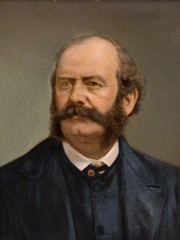
10. William Burges (1827 - 1881)
With an HPI of 64.08, William Burges is the 10th most famous British Architect. Her biography has been translated into 20 different languages.
William Burges (; 2 December 1827 – 20 April 1881) was an English architect and designer. Among the greatest of the Victorian art-architects, he sought in his work to escape from both nineteenth-century industrialisation and the Neoclassical architectural style and re-establish the architectural and social values of a utopian medieval England. Burges stands within the tradition of the Gothic Revival, his works echoing those of the Pre-Raphaelites and heralding those of the Arts and Crafts movement. Burges's career was short but illustrious; he won his first major commission for Saint Fin Barre's Cathedral in Cork in 1863 when he was 35. He died in 1881 at his Kensington home, The Tower House aged only 53. His architectural output was small but varied. Working with a long-standing team of craftsmen, he built churches, a cathedral, a warehouse, a university, a school, houses and castles. Burges's most notable works are Cardiff Castle, constructed between 1866 and 1928, and Castell Coch (1872–1891), both of which were built for John Crichton-Stuart, 3rd Marquess of Bute. Other significant buildings include Gayhurst House, Buckinghamshire (1858–1865), Knightshayes Court (1867–1874), the Church of Christ the Consoler (1870–1876), St Mary's, Studley Royal (1870–1878), in Yorkshire, and Park House, Cardiff (1871–1880). Many of his designs were never executed or were subsequently demolished or altered. His competition entries for cathedrals at Lille (1854), Adelaide (1856), Colombo, Brisbane (1859), Edinburgh (1873), and Truro (1878) were all unsuccessful. He lost out to George Edmund Street in the competition for the Royal Courts of Justice (1866–67) in The Strand. His plans for the redecoration of the interior of St Paul's Cathedral (1870–1877) were abandoned and he was dismissed from his post. Skilbeck's Warehouse (1865–66) was demolished in the 1970s, and work at Salisbury Cathedral (1855–1859), Worcester College, Oxford (1873–1879), and at Knightshayes Court had been lost in the decades before. Beyond architecture, Burges designed metalwork, sculpture, jewellery, furniture and stained glass. Art Applied to Industry, a series of lectures he gave to the Society of Arts in 1864, illustrates the breadth of his interests; the topics covered including glass, pottery, brass and iron, gold and silver, furniture, the weaver's art and external architectural decoration. For most of the century following his death, Victorian architecture was neither the subject of intensive study nor sympathetic attention and Burges's work was largely ignored. The revival of interest in Victorian art, architecture, and design in the later twentieth century led to a renewed appreciation of Burges and his work.
People
Pantheon has 50 people classified as British architects born between 1573 and 1964. Of these 50, 6 (12.00%) of them are still alive today. The most famous living British architects include Norman Foster, Baron Foster of Thames Bank, David Chipperfield, and Glenn Murcutt. The most famous deceased British architects include Christopher Wren, Augustus Pugin, and Capability Brown.
Living British Architects
Go to all RankingsNorman Foster, Baron Foster of Thames Bank
1935 - Present
HPI: 78.70
David Chipperfield
1953 - Present
HPI: 63.57
Glenn Murcutt
1936 - Present
HPI: 61.55
Kenneth Frampton
1930 - Present
HPI: 54.18
Peter Cook
1936 - Present
HPI: 52.18
Lesley Lokko
1964 - Present
HPI: 45.05
Deceased British Architects
Go to all RankingsChristopher Wren
1632 - 1723
HPI: 71.26
Augustus Pugin
1812 - 1852
HPI: 70.32
Capability Brown
1716 - 1783
HPI: 70.18
George Gilbert Scott
1811 - 1878
HPI: 66.66
Inigo Jones
1573 - 1652
HPI: 65.98
James Stirling
1926 - 1992
HPI: 65.85
Ebenezer Howard
1850 - 1928
HPI: 64.36
Robert Adam
1728 - 1792
HPI: 64.28
William Burges
1827 - 1881
HPI: 64.08
John Vanbrugh
1664 - 1726
HPI: 63.54
Michael Ventris
1922 - 1956
HPI: 63.29
Nora Stanton Barney
1883 - 1971
HPI: 63.13
Overlapping Lives
Which Architects were alive at the same time? This visualization shows the lifespans of the 25 most globally memorable Architects since 1700.


